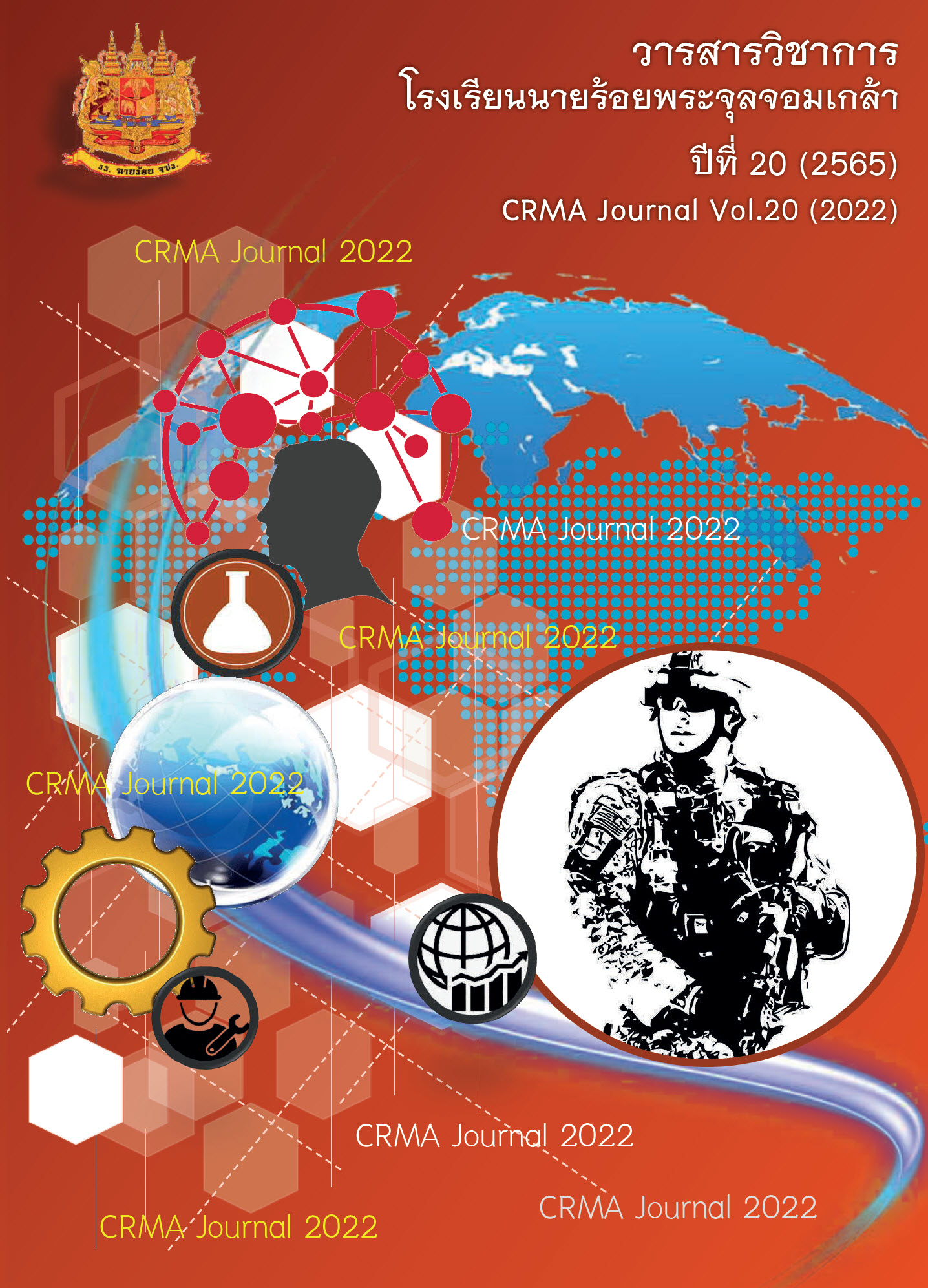Properties of mortar with partial replacement of solar panel glass powder
Main Article Content
Abstract
The amount of solar panel waste generated during the next 20-30 years from the installation during 2002-2015 could be up to 235,954 tons. Most of them are crystalline silicon solar panel. This type of solar panel contains up to 70-80% of glass by weight. The current management of solar panel waste in Thailand is disposal in landfills, which is not sustainable since the resource is wasted, not recycled. This research focuses on the recycling of crystalline silicon solar panel glass. To study the effects on the properties of mortar whose cement contents were partially replaced by ground solar panel glass with the d50 of 4.97 micrometer. The replacement were performed at 0%, 10%, 20% and 30%. The results showed that when glass powder addition was increased, expansion of cement paste subsequently increased, initial setting time and final setting time of cement paste, on the other hand, shorten, and percent flow of mortar decreased. Compressive strength of mortar at the early age of 7, 28 and 56 days showed that the mortar with 0% of glass powder had the highest compressive strength. At 90 days, the mortar with 10 % of glass powder had the highest compressive strength. This was because the pozzolanic reaction took a long time to react.
Article Details

This work is licensed under a Creative Commons Attribution-NonCommercial-NoDerivatives 4.0 International License.
Copyright of all articles published is owned by CRMA Journal.
References
สํานักงานนโยบายและแผนพลังงาน. (3 ธันวาคม 2564). พพ. จับมือ แจงเป้าหมาย AEDP2018. [ออนไลน์]. แหล่งที่มา: http://www.eppo.go.th/index.php/en/component/k2/item/14928-news-03072562.
พิชญ รัชฎาวงศ์, สมชัย รัตนธรรมพันธ์, เดวิด บรรเจิดพงศ์ชัย, ฐิติศักดิ์ บุญปราโมทย์, สันต์ สัมปัตตะวนิช. “การจัดการแผงพลังงานแสงอาทิตย์ที่หมดความคุ้มค่าในการผลิตไฟฟ้า,” สําานักงานกองทุนสนับสนุนการวิจัย, กรุงเทพมหานคร, 2559.
ณิชชา บูรณสิงห์. “แผงโซลาร์เซลล์: ขยะพิษที่ไม่ควรมองข้าม,”สําานักงานเลขาธิการสภาผู้แทนราษฎร, สําานักวิชาการ, กรุงเทพมหานคร, 2561.
ปัญญ์ จันทร์ลออ. (11 กรกฎาคม 2565). มาตรการทางกฎหมายในการจัดการซากแผงเซลล์แสงอาทิตย์”. [ออนไลน์]. แหล่งที่มา: https://so01.tci-thaijo.org/index.php/gradlawtujournal/article/view/147832/108834.
พินัส เลิศเลื่อมใส, บุนพล แจ้งสว่าง. (12 มกราคม 2565). กระจกและการเลือกใช้ที่เหมาะสม. [ออนไลน์]. แหล่งที่มา: http://www.eptg-acsc.co.th/mix-acs/images/Column/column5.pdf.
M. H. Shubbak, “Advances in solar photovoltaics: Technology review and patent trends,” Renewable and Sustainable Energy Reviews, vol. 115, 2019, doi: 10.1016/j.rser.2019.109383.
วีรชาติ ตั้งจิรภัทร, ชัย จาตุรพิทักษ์กุล, คู่มือการทดสอบคุณสมบัติของปูนซีเมนต์ มวลรวม และคอนกรีต, กรุงเทพฯ: วิศวกรรมสถานแห่งประเทศไทย ในพระบรมราชูปถัมภ์, 2556.
มาตรฐานผลิตภัณฑ์อุตสาหกรรม, “ปูนซีเมนต์ปอร์ตแลนด์ปอซโซลาน,” กระทรวงอุตสาหกรรม, สําานักงานมาตรฐานผลิตภัณฑ์อุตสาหกรรม, กรุงเทพมหานคร, 2556.
วินิต ช่อวิเชียร, คอนกรีตเทคโนโลยี, กรุงเทพฯ: บริษัท นิวไทยมิตรการพิมพ์ (1996) จําากัด, 2557.
ศุภนนท์ บรรจงเกลี้ยง, 2549. ศักยภาพของผงแก้วในการเป็นปอซโซลาน. ปริญญานิพนธ์, จุฬาลงกรณ์มหาวิทยาลัย.
American society for Testing and Materials. “ASTM C1866 : Standard specification for Ground-Glass Pozzolan for use in concrete,” Book of ASTM Standards, vol 04.02, pp. 5, 2020, doi: 10.1520/C1866_C1866M-20.
A. Paiano, “Photovoltaic waste assessment in Italy,” Renewable and Sustainable Energy Reviews, vol 41, pp. 99-112, 2015, doi: 10.1016/j.rser.2014.07.208.
K. Zheng, “Pozzolanic reaction of glass powder and its role on controlling alkali-silica reaction,” Cement and Concrete Composition, vol 67, pp. 30-38, 2016, doi: 10.1016/j.cemconcomp.2015.12.008.
S. Islam, M. H. Rahman, N. Kazi, “Waste glass powders partial replacement of cement for sustainable concrete practice,” International Journal of Sustainable Built Environment, vol 6, pp. 37-44, 2017, doi: 10.1016/j.ijsbe.2016.10.005.
Q. Li, H. Qiao, A. Li, G. Li, “Performance of waste glass powder as a pozzolanic material in blended cement mortar,” Construction and Building Materials, vol 324, 2022, doi: 10.1016/j.conbuildmat.2022.126531.
American society for Testing and Materials. “ASTM C204: Standard Test Method for Fineness of Hydraulic Cement by Air-Permeability Apparatus,” Book of ASTM Standards, vol 04.01, p. 11, 2019, doi: 10.1520/C0204-18E01.
American society for Testing and Materials. “ASTM D854-14: Standard Test Methods for Specific Gravity of Soil Solids by Water Pycnometer,” Book of ASTM Standards, vol 04.08, p. 8, 2016, doi: 10.1520/D0854-14.
American society for Testing and Materials. “ASTM C151: Standard Test Method for Autoclave Expansion of Hydraulic Cement,” Book of ASTM Standards, vol 04.01, p. 4, 2018, doi: 10.1520/C0151_C0151M-18.
American society for Testing and Materials. “ASTM C187 : Standard Test Method for Amount of Water Required for Normal Consistency of Hydraulic Cement Paste,” Book of ASTM Standards, vol 04.01, p. 3, 2016, doi: 10.1520/C0187-16.
American society for Testing and Materials. “ASTM C191 : Standard Test Methods for Time of Setting of Hydraulic Cement by Vicat Needle,” Book of ASTM Standards, vol 04.01, p. 8, 2021, doi: 10.1520/C0191-21.
American society for Testing and Materials. “ASTM C1437 : Standard Test Method for Flow of Hydraulic Cement Mortar,” Book of ASTM Standards, vol 04.01, p. 2, 2020, doi: 10.1520/C1437-20.
American society for Testing and Materials. “ASTM C109 : Standard Test Method for Compressive Strength of Hydraulic Cement Mortars (Using 2-in. or [50 mm] Cube Specimens),” Book of ASTM Standards, vol 04.01, p. 12, 2021, doi: 10.1520/C0109_C0109M-21.


